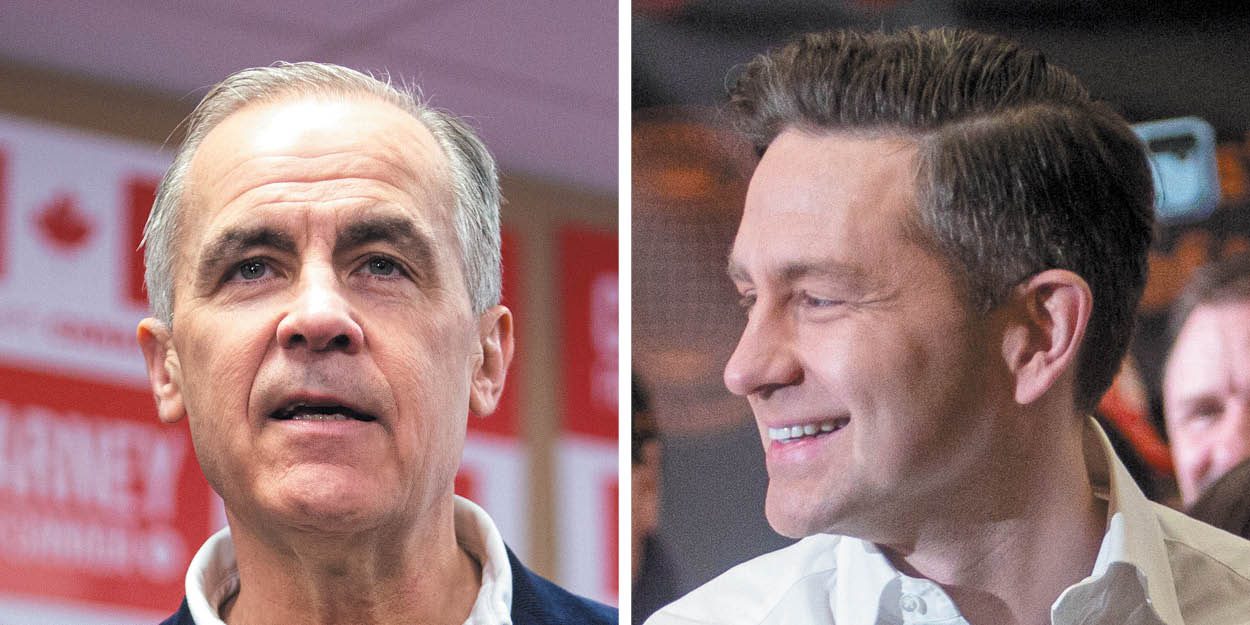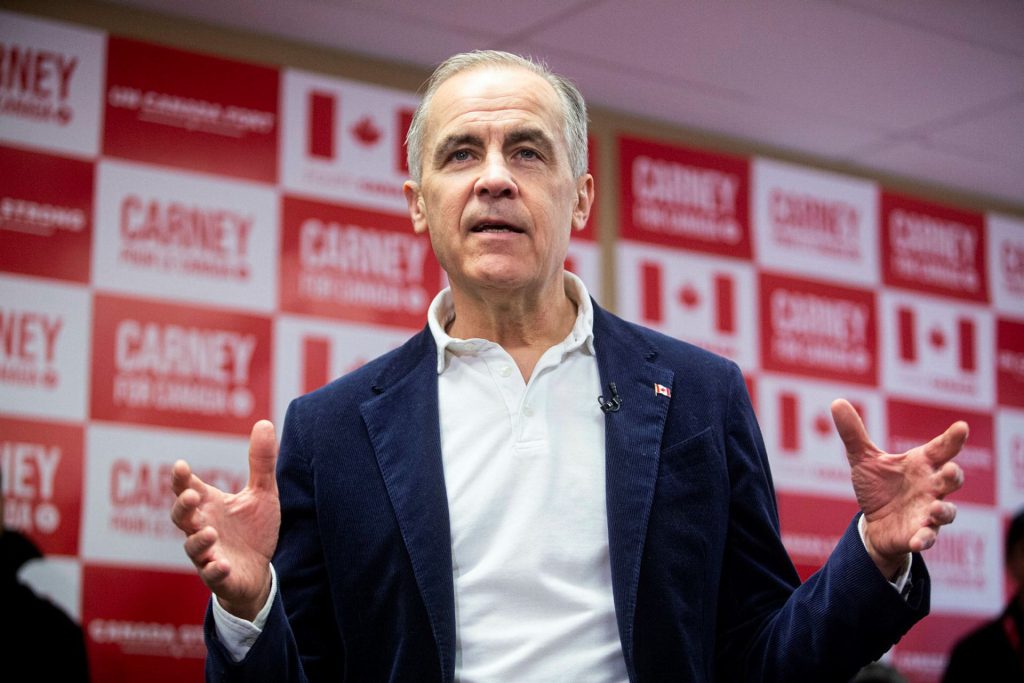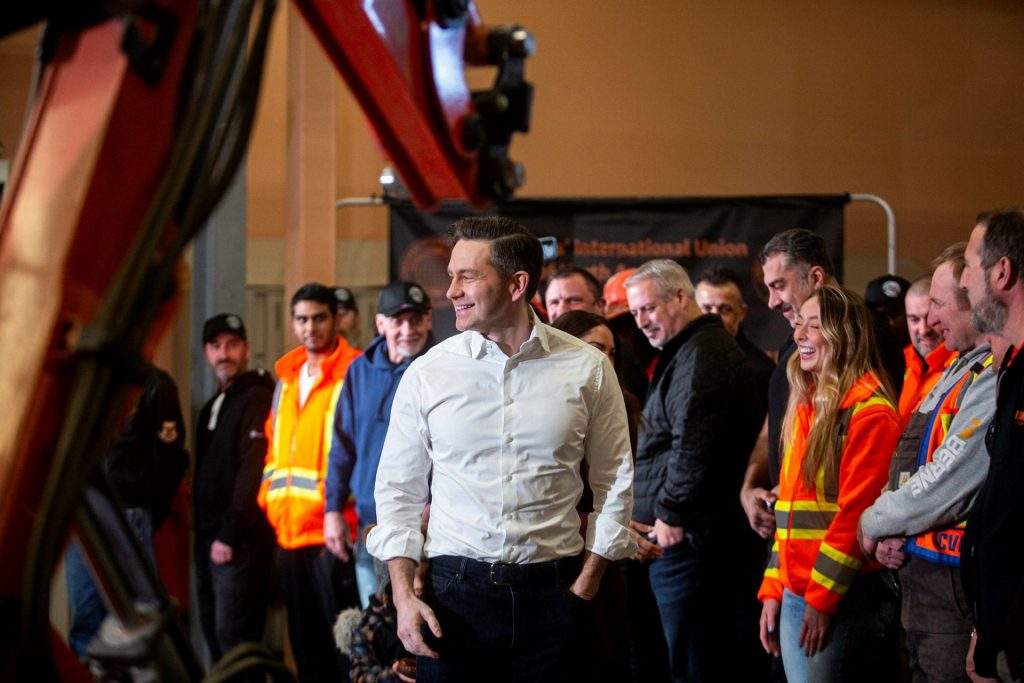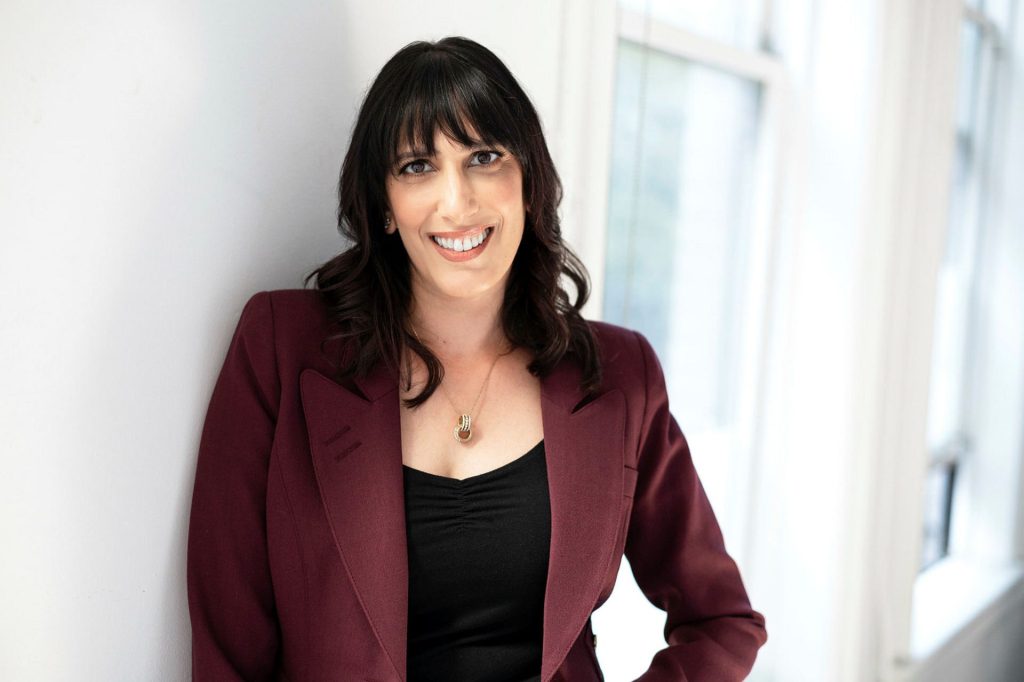Carney’s driving Grits’ momentum, but polls suggest Tories hold upper hand in ‘commitment gap’

As the Liberals maintained about a 10-point lead against the Conservatives in an Angus Reid Institute survey last week, the Grits were also closing what the pollster called the “commitment gap” between them and the Tories.
The results of the online poll, involving 2,184 Canadians and released on April 7, found that 46 per cent of respondents planned to vote Liberal compared to 36 per cent who would cast their ballots for the Conservatives—positioning the governing party for a fourth consecutive term in office, and with a majority in the House of Commons seats based on the Liberals’ performance in seat-rich provinces.
However, that 10-point spread is reversed in terms of committed voters. Seventy-two per cent of Conservative supporters said they were “very committed” to voting Conservative, while 62 per cent of Liberals felt the same way about their party—or a 13-point increase from when Prime Minister Mark Carney called the general election on March 23.
During that time, the “mushiness” of committed Liberal voters has begun to “solidify,” said Shachi Kurl, president of the Angus Reid Institute.

The shift began just days into the campaign, when the Angus Reid Institute found a significant pool of “Liberal switchers,” particularly 35 per cent who moved their support to the Liberals from the NDP, as a survey released on March 27 found. Another Angus Reid poll, released three days before, reported that half of 2021 voters intended to vote for the Grits.
Also of significance: 29 per cent of Liberal switchers previously supported the Conservatives, according to the March 27 poll, which also tracked the two top reasons for the Liberal gains.
More than half—56 per cent—said it was Carney becoming party leader. Not far behind, at 51 per cent, was U.S. President Donald Trump’s attacks on Canada via his administration’s imposition of tariffs and his dreams of annexation.
The challenge for the Liberals is to ensure that voting intention becomes a reality, said Kurl.
She noted that the Conservatives “have a super-enthusiastic base, very motivated not only voting Conservative because they like Pierre Poilievre and what he stands for, but also because they are very motivated to see a change in government after almost a decade of the Liberals in power.”
Beyond Carney and Trump, Canadians are also considering the Liberals—based on the so-called “ABC” or “Anyone but Conservative” factor—to “stop Pierre Poilievre from becoming prime minister,” said Kurl. Angus Reid found 30 per cent of Liberal switchers were in the ABC camp.
Carney is driving the Liberals’ momentum.

Fifty-five per cent of respondents in the recent Angus Reid survey said they had a favourable view of Carney; 38 per cent had an unfavourable view.
Sentiments toward Conservative Leader Pierre Poilievre trended in the opposite direction.
Sixty-per-cent of Canadians said they had an unfavourable view of the Conservative leader compared to 34 per cent who view him favourably.
Kurl said that when the Liberals won the 2015 federal election and formed a majority government, their victory included votes from Conservatives disaffected by their party, which had been in power for nearly a decade at the time.
“There is a segment in the population that believes strongly in change,” she explained.
But until the recent change in leadership for the Liberals, their party drove the desire for change, which in part was accomplished with Justin Trudeau’s departure as prime minister and Liberal leader, said Kurl.
But she added that “real problems, like housing affordability, the cost of living, inflation, and low productivity numbers remain.”
“What has improved, in a very short period of time, is belief in a Liberal government to address or change those things, and a lot of that has to do with people looking at Mark Carney and saying, ‘He appears to be a qualified leader.’”
In Angus Reid’s recent survey, 50 per cent of respondents said that Carney would make the best prime minister. Only 28 per cent felt the same way about Poilievre, whose biggest support came from men 35 years of age and older.
Along gender lines, the Conservatives—at 44 per cent—only have a lead over the Liberals—at 40 per cent—in the 35-54 age group for men, based on Angus Reid’s latest numbers.
“The Conservatives, pre-dating Pierre Poilievre, have long had a problem attracting female voters,” explained Kurl, who noted that it hasn’t gotten better under Poilievre’s leadership.
While he might resonate with young male voters—“leaning into bro energy, crypto, Bitcoin and that Jordan Peterson interview [posted online earlier this year], those are things that really turn a lot of women off,” said Kurl.
She said that “when women were starting to come around to the Conservative Party—predominantly women between the ages of 35 and 54 last year—because of cost-of-living issues around the household purse” involving rising grocery prices, rent and mortgage payments, “Pierre Poilievre chronically struggled with net-positive favourability in our surveys.”
“Even though women were prepared to look at his party as an alternative to the Liberals, it’s not like they ever warmed up to him personally—and he’s paying for that now,” said Kurl, who also doesn’t think Poilievre’s party has fully gotten the message about its situation in the polls.

“When you hear Conservative strategists saying, ‘It’s not that bad, it’s not that terrible, we’re mostly holding onto our traditional base.’ Sure, yes that’s true. They haven’t lost that much, they haven’t imploded,” she said. “But they’ve lost enough to fundamentally change their situation in this moment from cruising to what would have been a parliamentary victory to having to measure every vote,” said Kurl.
In an Angus Reid Institute poll released on Dec. 30, the Conservatives were in super-majority territory with 45 per cent support, compared to the Liberals at 11 per cent and were even trailing the NDP, now at seven per cent.
While the Tories held a large rally on April 7 in Edmonton featuring former Conservative prime minister Stephen Harper—Poilievre’s team had more than a comfortable lead in Alberta with 54 per cent support, or nearly 20 points ahead of Team Carney at 35 per cent in Angus Reid’s latest survey.
But as that poll illustrated, it’s in Canada’s four major metropolitan centres where the Conservatives, at 36 per cent, were trailing the Liberals at 46 per cent overall.
The gap between both parties in each of the four cities is sizable. In the 905 zone outside Toronto, the Liberals had 55 per cent support with the Conservatives at 38 per cent.
In Toronto, the Grits enjoyed a bigger lead at 64 per cent support compared to the Tories at 25 per cent. At 52 per cent, the Liberals also outpaced the Conservatives at 27 per cent in Vancouver.
In Montreal, it was almost no contest between both parties. The Tories had 16 per cent support; the Liberals: 50 per cent support. The Bloc Québécois, at 24 per cent, was in second place.
As Kurl told The Hill Times: “The Liberals have reset the dynamics of this campaign in the cities.”
Their challenge, especially among younger voters, will be to get their supporters to the ballot boxes.
However, the significance of the upcoming election might serve as a motivator for voters.
In an Angus Reid Institute survey released on March 24, 79 per cent of Liberal supporters said this year’s national vote was “way more important” than the one in 2021. Not far behind were Conservative supporters, 76 per cent of whom felt the same way.
As Kurl outlined, “Conservative supporters think it’s very, very important not to give the Liberals a fourth term. Many Liberal supporters believe it’s important to elect someone who is best to stand up to Trump, and also to prevent Pierre Poilievre from forming government.”
“Everyone’s got their reasons,” she added, “but that would suggest a higher turnout.”
The Hill Times





 LICENSING
LICENSING PODCAST
PODCAST ALERTS
ALERTS













